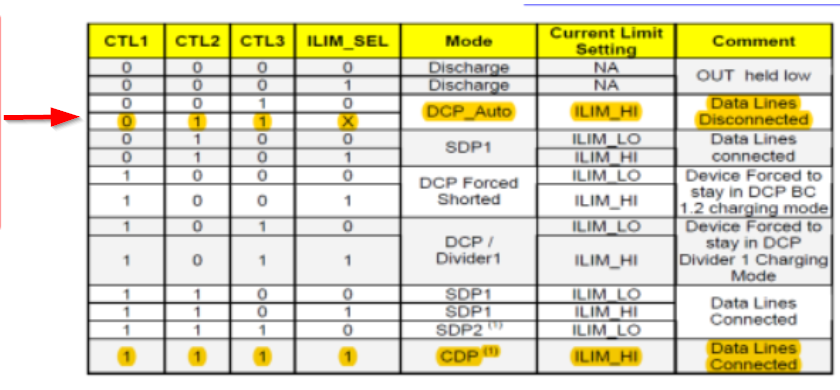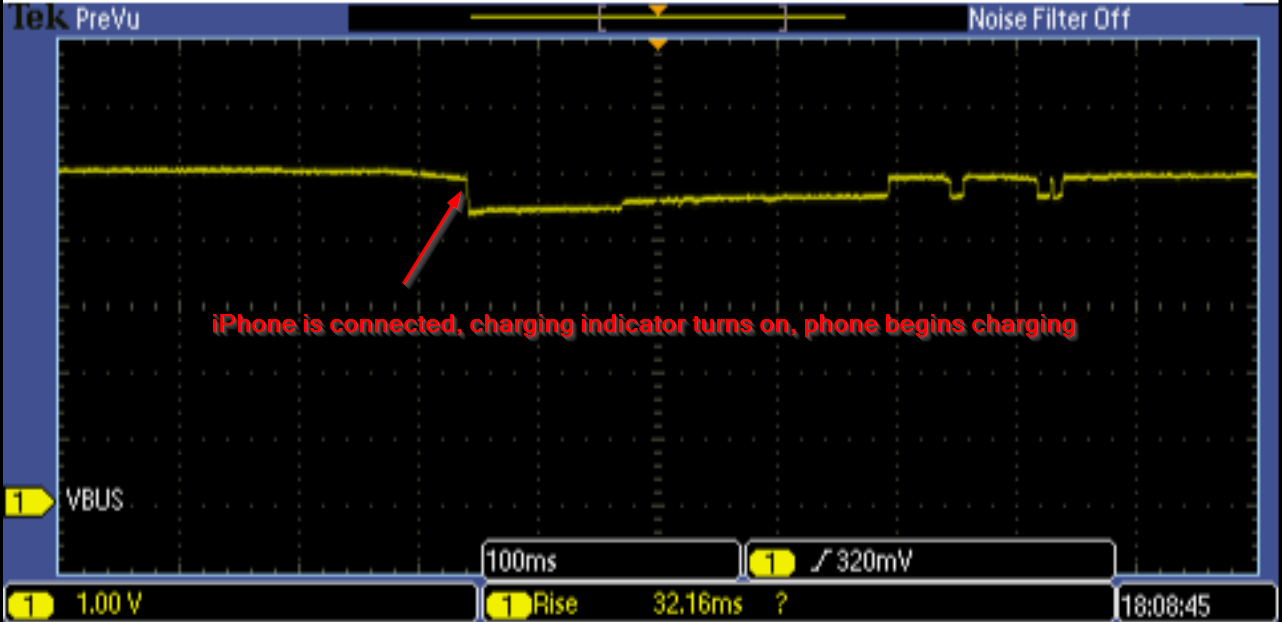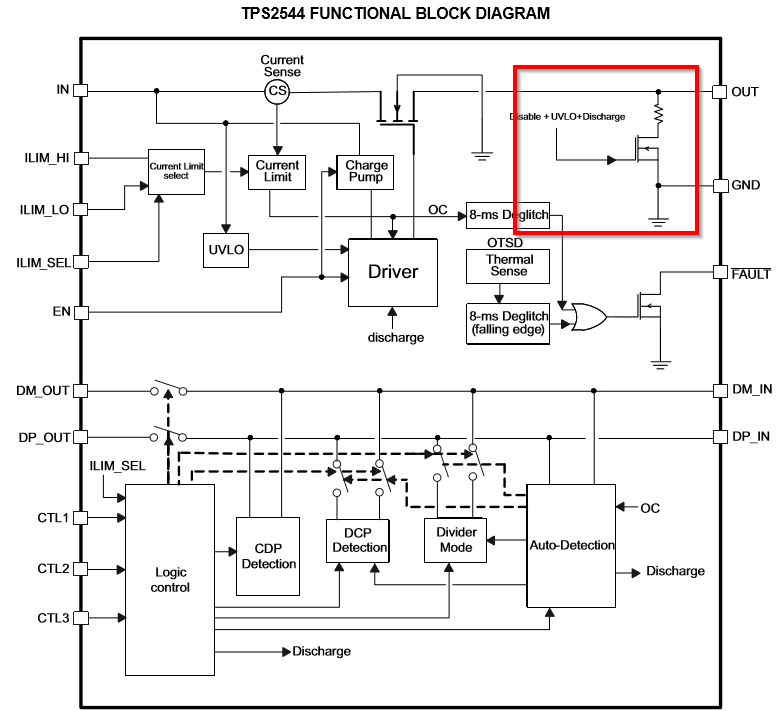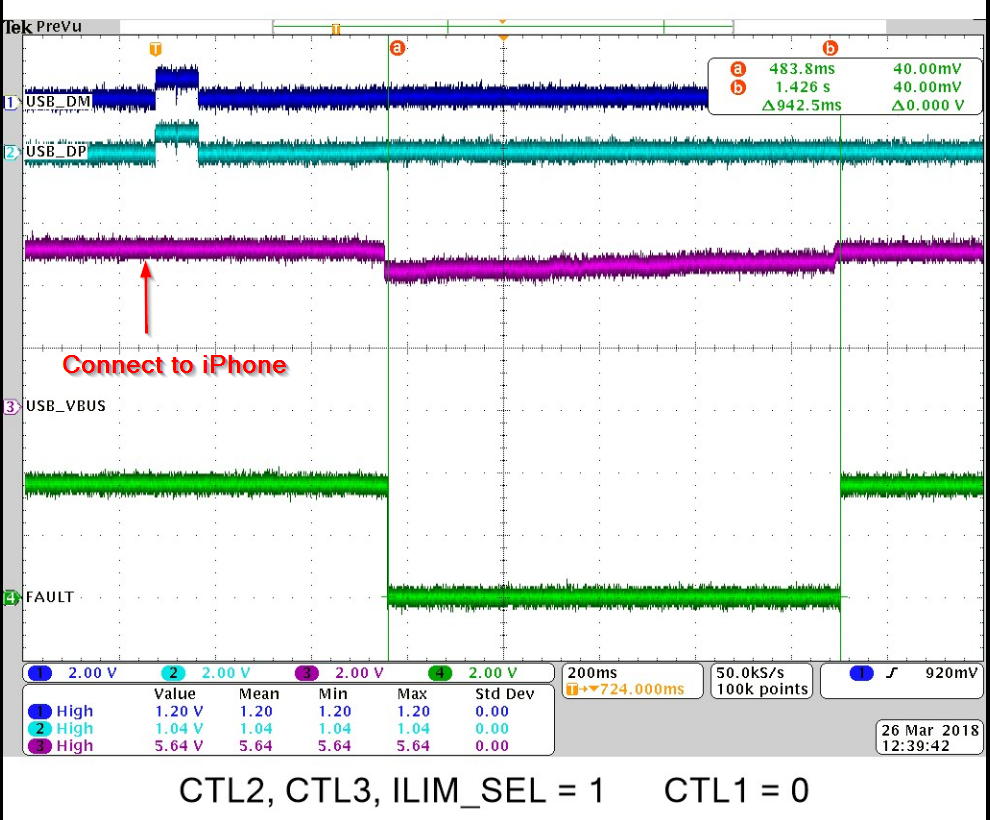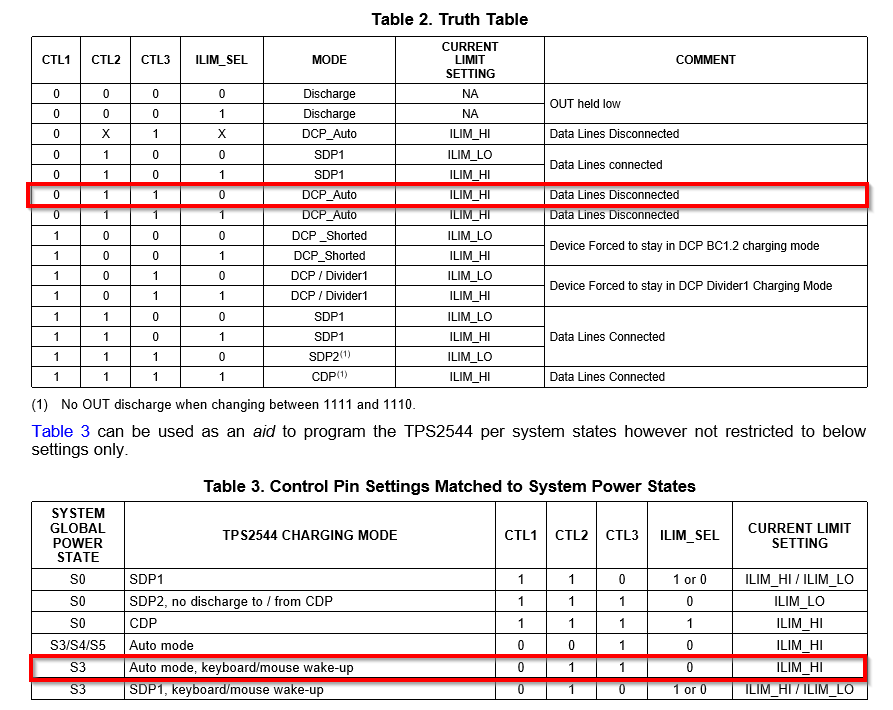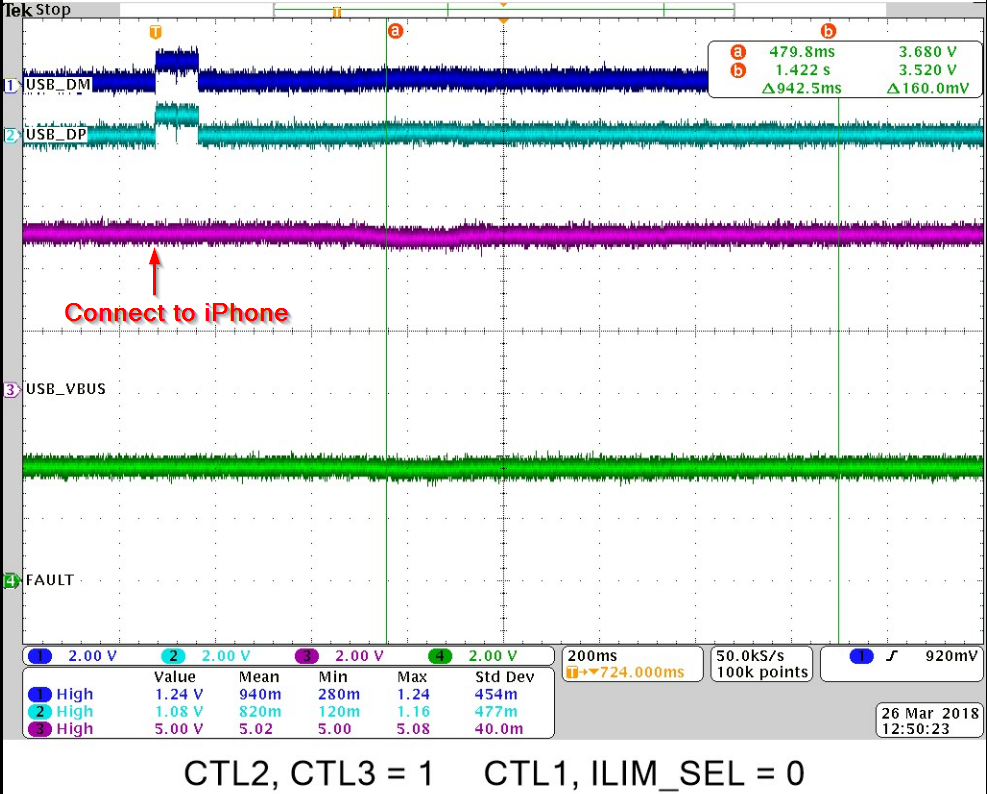Other Parts Discussed in Thread: TPS2546
Dear Team,
So far we found that TPS2544's VBUS will drop about 2 second and then go up again as below figure when it connects with Apple product. Ex: Iphone SE, Iphone 7.
Is it related to the mode we are using? We only use DCP_Auto and CDP mode as below.


